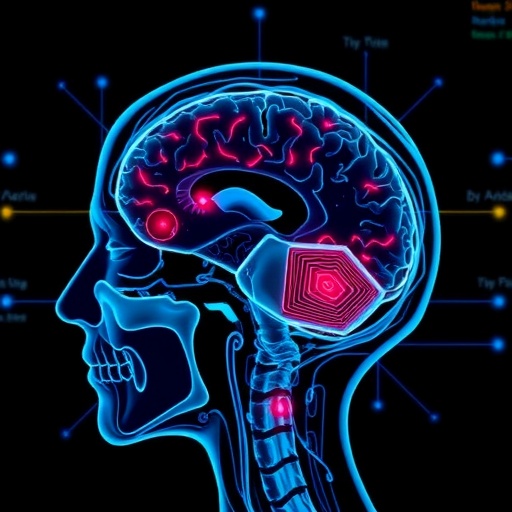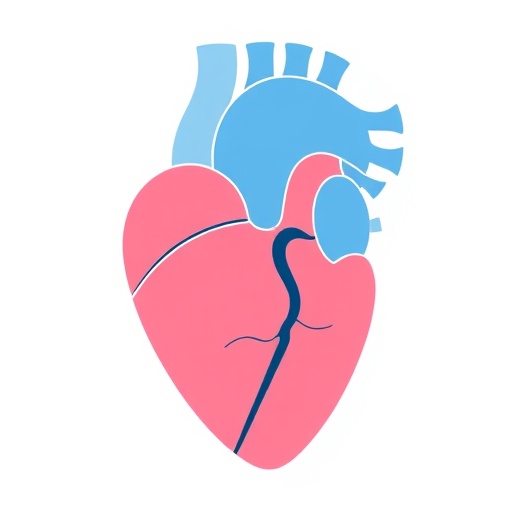In a groundbreaking study, researchers have harnessed the power of machine learning to predict significant clinical improvements in patients undergoing an Interdisciplinary Intensive Outpatient Program (IOP) for traumatic brain injury (TBI). This innovative approach represents a pivotal moment in the field of rehabilitation, where traditional methods often leave clinicians uncertain about the trajectory of recovery for individuals with complex neurological impairments. The study, led by a team comprising Srikanchana, Samuel, Powell, and others, presents a detailed examination of how machine learning algorithms can effectively interpret vast datasets to identify potential for recovery in TBI patients.
Traumatic brain injury remains a significant public health concern, with millions of individuals affected each year. The consequences of TBI can vary widely, ranging from mild concussions to severe impairments that drastically affect quality of life. Consequently, developing effective rehabilitation strategies is paramount. The IOP provides an interdisciplinary approach, integrating various therapeutic modalities aimed at restoring function and facilitating recovery. However, predicting which patients will respond favorably to such comprehensive programs has been challenging.
Previous research in rehabilitation has typically relied on clinical assessments and standardized measures to evaluate patient outcomes. While these methods offer valuable insights, they often fall short in capturing the nuanced changes that occur during rehabilitation. The integration of machine learning opens new avenues by allowing the analysis of complex patterns in patient data, which traditional methods might overlook. By utilizing algorithms that can process and derive insights from large volumes of data, this study seeks to refine the predictive capabilities regarding patient outcomes in TBI rehabilitation.
Machine learning algorithms can be trained on extensive datasets that include demographic information, clinical history, and neuropsychological assessment results. The researchers meticulously gathered such data from patients enrolled in the IOP, ensuring a comprehensive representation of the population. Using this wealth of information, the team was able to develop a predictive model that not only identifies individuals with better recovery potential but also highlights key factors that influence outcomes. This model serves as a pivotal tool for clinicians, enabling them to tailor rehabilitation strategies to the unique needs of each patient.
One of the significant advantages of employing machine learning is its ability to continually learn and update based on new data. As more patients engage in the IOP, the algorithms can refine their predictive capabilities, enhancing their accuracy over time. This dynamic nature of machine learning contrasts sharply with static clinical guidelines, offering a responsive approach that evolves alongside advancements in rehabilitation research. The ongoing refinement of these algorithms means that clinicians can remain at the forefront of innovative practices, ultimately improving the quality of care delivered to patients.
The implications of this study extend beyond enhancing individual patient outcomes. By accurately predicting which patients are most likely to benefit from specific interventions, healthcare systems can optimize resource allocation and improve overall program effectiveness. For example, patients identified as unlikely to respond to traditional therapies could be directed toward alternative treatments earlier in their rehabilitation journey. This strategic deployment of resources not only benefits patients but also aligns with the increasing emphasis on value-based care in the healthcare landscape.
Furthermore, the study raises critical discussions surrounding patient-centered care and the ethical considerations of using machine learning in clinical settings. While the promise of such technology is immense, the potential risks associated with algorithmic bias necessitate rigorous scrutiny. Developers must ensure that the datasets used for training algorithms are representative of diverse populations to mitigate any unintended consequences. Moreover, transparency in predictive modeling will foster trust among patients and healthcare providers alike, ensuring that the use of machine learning enhances the therapeutic alliance rather than undermines it.
The integration of machine learning into rehabilitation practices also opens the door to a more personalized approach to care. Each TBI patient presents a unique profile of challenges and strengths. Tailoring rehabilitation programs to fit these individual profiles not only promotes engagement but also enhances the likelihood of achieving meaningful outcomes. By leveraging machine learning algorithms to predict treatment responses, clinicians can craft personalized rehabilitation plans that respect the individuality of each patient, maximizing their chances of success and overall well-being.
In summary, the innovation presented by Srikanchana and colleagues marks a significant step forward in predicting clinical outcomes for patients with traumatic brain injury. The use of machine learning holds great promise for transforming rehabilitation practices, ultimately leading to improved patient care and recovery trajectories. As the field of rehabilitation continues to evolve, integrating advanced technological solutions such as machine learning could redefine how healthcare professionals support individuals navigating the complexities of recovery after TBI.
As the world increasingly embraces the data revolution, the potential for machine learning to contribute to better health outcomes is not just a dream; it is a reality on the horizon. This study serves as a reminder of the ongoing commitment within the scientific community to explore new avenues for improving care. By continually seeking innovative solutions to age-old challenges, the future of rehabilitation in the context of traumatic brain injury looks brighter, driven by the promise of technology, data, and a deep understanding of patient needs.
The researchers’ commitment to interdisciplinary collaboration stands at the heart of this study’s success. By bringing together experts from various fields, they have harnessed a wealth of knowledge and experience that enriches the application of machine learning in clinical settings. This collaborative spirit will be essential as the field navigates the complexities of implementing technology-driven interventions in rehabilitation.
In conclusion, through the lens of machine learning, the future of traumatic brain injury rehabilitation is not only promising but also presents an opportunity to redefine clinical practice. Each patient’s journey can become a tailored experience driven by data-informed decisions. As these innovations take root, the broader implications for healthcare delivery will provoke meaningful conversations about how technology can enhance, rather than replace, the human touch that is so critical in therapeutic settings. With continued dedication and attention to ethical considerations, the future of rehabilitation may reflect not only advancements in technology but also a profound commitment to the well-being of every patient.
Subject of Research: Prediction of Clinically Significant Improvements in Traumatic Brain Injury Rehabilitation
Article Title: Prediction of Clinically Significant Improvements During the Interdisciplinary Intensive Outpatient Program for Traumatic Brain Injury Using Machine Learning
Article References:
Srikanchana, R., Samuel, D., Powell, J. et al. Prediction of Clinically Significant Improvements During the Interdisciplinary Intensive Outpatient Program for Traumatic Brain Injury Using Machine Learning. Ann Biomed Eng (2025). https://doi.org/10.1007/s10439-025-03853-5
Image Credits: AI Generated
DOI:
Keywords: Traumatic Brain Injury, Machine Learning, Rehabilitation, Predictive Analytics, Interdisciplinary Approach.
Tags: AI in healthcareclinical improvement forecastingdata-driven healthcare solutionsinnovative rehabilitation techniquesinterdisciplinary outpatient programsmachine learning in rehabilitationneurological impairment rehabilitationpatient outcome assessmentpredictive analytics in medicinerecovery trajectory in TBI patientsTBI treatment strategiestraumatic brain injury recovery predictions





